Best Anubias Plants For Betta Fish
Today, we’re diving deep into the world of Anubias plants, a true game-changer in the betta universe.
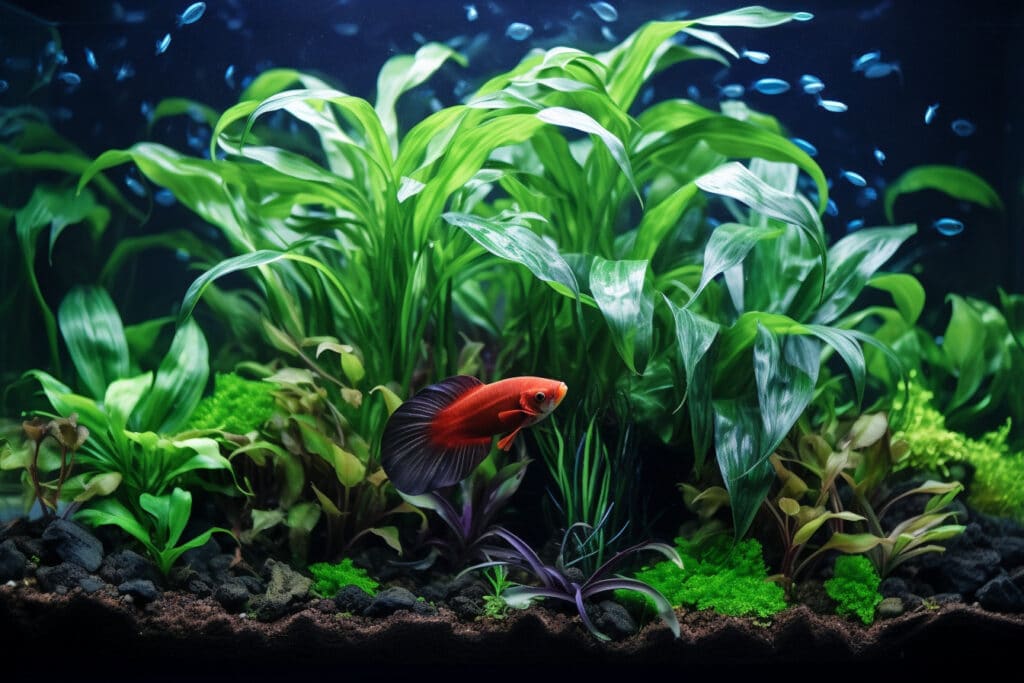
Why the fuss over Anubias, you ask? Well, let me tell you, these plants are like the superheroes of the aquatic plant world.
Not only do they offer an aesthetic flair to your aquarium, but they also provide some serious perks for your finned friends.
Imagine giving your betta fish a lush, natural playground that doubles as a wellness retreat. Yup, Anubias plants do just that!
So, whether you’re a betta parent looking to improve your fish’s health or simply dazzle your guests with a drop-dead gorgeous tank, this blog post has got you covered.
We’ll talk about why Anubias plants are such a hit, how to properly introduce them into your Betta fish’s aquatic paradise, and answer some burning questions you might have.
Table of Contents 🦑
Why Anubias Plants Matter
Alright, Betta aficionados, it’s time to delve into the nitty-gritty: Why should you care about Anubias plants in the first place?
Health and Happiness
First off, Anubias plants create a more natural environment for your betta, mimicking their natural habitat. This helps keep your betta fish relaxed and happy—after all, a happy fish is a healthy fish.
But it’s not just about keeping up appearances; Anubias plants help improve water quality by absorbing excess nutrients and releasing oxygen. In other words, they’re like tiny water purifiers, making your tank a cleaner, safer home for your betta.
Visual Appeal
Let’s face it, an aquarium with plants just looks more inviting. Anubias plants add color, depth, and complexity to your betta tank. Their lush green leaves and intricate root structures give an aesthetic oomph that can’t be ignored.
Playtime Paradise
Your betta loves to explore! Anubias plants offer an adventurous landscape full of hidey-holes and nooks to explore. Plus, the broad leaves are a perfect lounging area for your betta when they feel like taking a break from all the action.
So, now that you’re sold on why Anubias plants are the cat’s meow—or should we say, the fish’s fin?—let’s talk about how to bring these leafy wonders into your betta’s world.
Criteria of Choosing Anubias Plants for bettas
So you’re ready to add some leafy goodness to your tank. Awesome! But hold your horses—or should we say, hold your fins? There are a few things to consider before making your Anubias pick.
Size Matters
Anubias plants come in various sizes, from the petite Anubias Nana to the more robust Anubias Barteri. Consider the size of your tank and the space you have available.
Small tanks (10 gallons) will benefit from smaller Anubias species, while larger tanks can accommodate bigger plants.
Leaf Shape and Texture
Different Anubias types have diverse leaf shapes, from rounded to spear-like. Choose a leaf shape that complements your betta’s fins and doesn’t have sharp or jagged edges that could damage them.
Color Palette
Anubias leaves can range from dark green to lighter shades. While this might not impact your betta’s health, choosing a color that complements your tank’s aesthetic can make it more visually appealing.
Safety First
Make sure your Anubias plants are free from pesticides and other chemicals. Always buy from reputable sources or specialized aquarium plant sellers.
Growth Rate
Some Anubias varieties grow faster than others. If you’re looking for a low-maintenance option, slower-growing types might be your best bet.
Now that we’ve covered what to look for, you’re one step closer to becoming an Anubias aficionado. Up next, we’ll guide you through introducing these green gems to your betta tank.
How to Introduce Anubias to Your Betta Tank
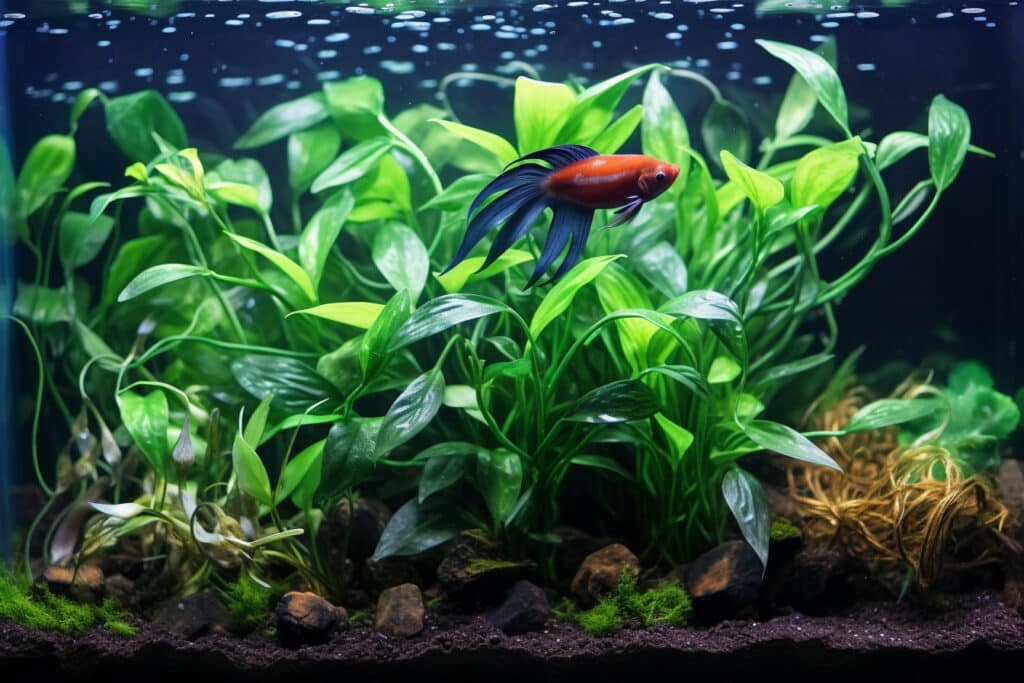
Adding a new plant to your aquarium is a lot like introducing a new roommate—there are some rules of engagement. So, here’s your foolproof guide to introducing Anubias to your betta tank without any drama.
Quarantine Is Cool:
Before placing the new Anubias plant directly into your betta tank, quarantine it in a separate container of tank water for a few days. This will help you ensure the plant isn’t carrying any diseases or parasites that could harm your fishy friend.
Clean and Trim:
Give your Anubias plant a gentle rinse under cold tap water and trim off any damaged or rotting leaves. Healthy leaves equal a healthy tank!
Anchor’s Away:
Anubias aquarium plants aren’t huge fans of being buried in the substrate. Instead, attach them to driftwood, rocks, or decorations using fishing lines or super glue. Make sure it’s secure!
Positioning:
Place the Anubias where it will receive moderate lighting but won’t block your betta’s swimming path. Remember, Anubias likes to be in the spotlight but not the scorching sun!
Tank Re-Entry:
Finally, gently place the anchored Anubias into your betta tank. Keep an eye out for how your betta reacts to its new neighbor.
Observation:
Monitor both the Anubias and your betta for a few days to ensure they’re getting along. Look for new leaf growth on the Anubias and general well-being in your betta.
And voila! You’ve just made your betta tank a bit more like an underwater garden.
Where to Position Anubias Plants in Your Betta Fish Tank
When it comes to designing the perfect aquatic home for your betta, the positioning of your Anubias aquarium plants can make all the difference. But don’t fret, Anubias is an incredibly versatile plant that can adapt to various locations within your aquarium.
-
Midground Plant: Anubias plants often shine as midground plants. They’re eye-catching but not overwhelming, providing a lush, green focal point that bettas love to explore.
-
Background Plant: If you have a larger tank, Anubias can also serve as a background plant. Their broad leaves can create a dense backdrop, setting the stage for other plants and decorations in the foreground.
-
Nano Tank: Don’t have much space? No problem! Anubias is a hardy plant that’s well-suited to nano tanks as well. Its adaptability and low-maintenance nature make it a hit in the aquarium hobby, especially for those who are new to planting.
-
Compared to Other Plants: One of the reasons Anubias aquarium plants are so beloved is their compatibility with a wide range of other plants. Whether you’re mixing them with tall, reedy plants or low-lying carpet plants, Anubias can hold its own.
Choosing where to place your Anubias is more than just an aesthetic choice; it’s about creating a balanced, enriching environment for your betta fish. Experiment with different positions to see where these versatile, hardy plants fit best in your unique setup.
5 Types of Anubias for Betta Tanks
When it comes to Anubias, you’ve got options, people! And let’s face it, your betta deserves the best. So, let’s look at some popular Anubias types to consider for your betta haven.
Anubias Nana
The Anubias Nana is the compact SUV of Anubias plants—small, but totally up for the adventure. With its petite leaves and unassuming demeanor, this variety is perfect for smaller tanks.
Anubias Nana Petite
The Anubias Nana ‘Petite’ is like the mini cooper of the Anubias world—tiny but mighty. With its miniature leaves and unobtrusive presence, it’s the ideal candidate for nano tanks or as a subtle addition to larger setups.
Anubias Barteri Var
The Barteri is the poster child for the Anubias species, known for its larger, heart-shaped leaves. It’s robust, easy to care for, and gives your tank a lush, tropical vibe.
Anubias Coffeefolia
If you’re a coffee lover, you’ll fall head over heels for Anubias Coffeefolia. This type has leaves that resemble coffee bean shapes, making it the ‘brew-tiful’ choice for a more unique aesthetic.
Anubias Nangi
A hybrid between Anubias Nana and Anubias Giletii, the Nangi offers the best of both worlds. It’s versatile, attractive, and gets along with bettas like peanut butter with jelly.
Anubias Lanceolata
With its elongated leaves resembling lance tips, Anubias Lanceolata adds a touch of the exotic to your betta tank. Plus, it’s super easy to maintain.
So, which Anubias are you vibing with? Don’t worry, you can’t really go wrong here; they’re all betta-approved!
Anubias Care 101
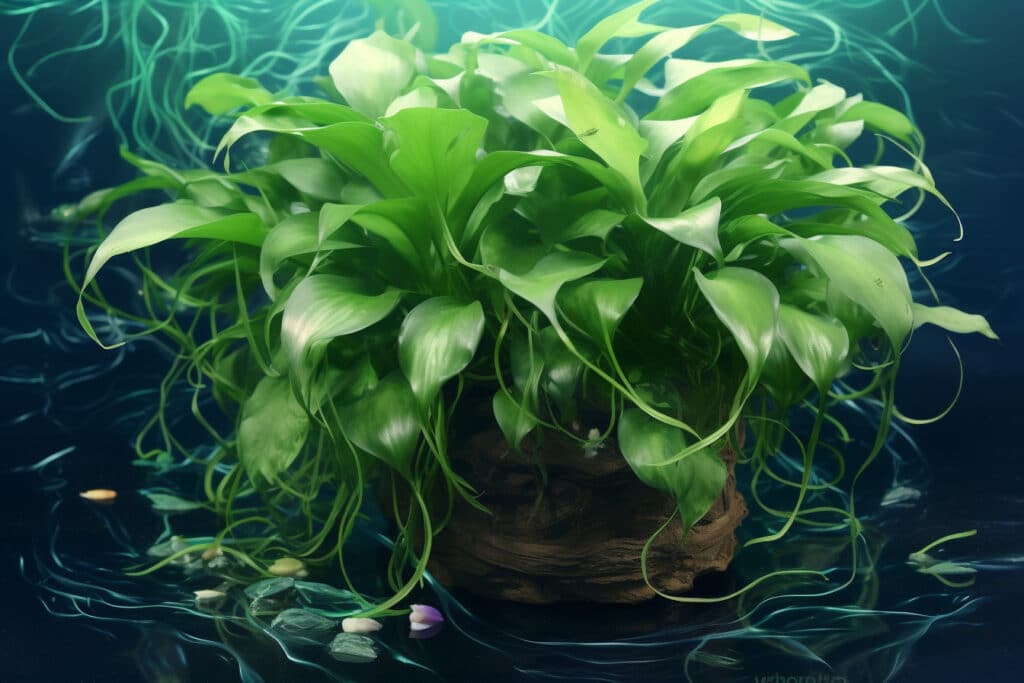
Look, we get it: Not all of us have a green thumb, but Anubias aquarium plants are forgiving even if you don’t. Here’s the lowdown on how to keep your Anubias in tip-top shape for your betta buddy.
Light It Up
Anubias isn’t picky when it comes to lighting. Low to medium light is perfect for them. Too much light, and you’re inviting algae to the party, and trust us, algae is a party pooper.
Water Parameters
Anubias aquarium plants are like bettas, they prefer slightly acidic to neutral pH levels—around 6.0 to 7.5. Keep the water temperature between 72-82°F, and you’re golden.
Fertilize Wisely
Though Anubias plants are not nutrient hogs, they appreciate the occasional dose of a good aquatic fertilizer. Just make sure it’s betta-safe!
Trimming and Pruning
If your Anubias starts to look more like a jungle, don’t hesitate to give it a little trim. Just be careful to cut above the ‘rhizome’—that’s the horizontal stem from which leaves and roots grow.
Anchoring Your Plant
Your Anubias will love you more if you anchor it to a piece of driftwood or a rock. This keeps it stable and allows the roots to grow freely.
Keep these care tips in your back pocket, and your Anubias will be the star of your betta tank in no time!
4 Common Issues and Their Fixes
Even the hardy Anubias can have an off day—or week. But don’t worry; here’s how to troubleshoot common problems and get your Anubias back on its A-game.
Yellow Leaves
Seeing some yellow on those leaves? Could be a nutrient deficiency, most likely iron. A betta-safe aquatic plants fertilizer can often do the trick.
Algae Growth
Remember we talked about too much light being an algae invitation? Well, if you see algae growing on your Anubias leaves, it’s time to check your lighting conditions.
Root Rot
If the roots are turning mushy and dark, you’ve got root rot. The likely culprit is poor water quality, so test those water parameters!
Snail Infestation
Anubias leaves are tough, but snails love ’em. If you see tiny snails crawling around, you might want to consider betta-safe snail treatments or manually remove them.
Alright, that’s your rapid-fire troubleshooting guide to keep your Anubias looking lush and lively. A little TLC, and your plant will be as resilient as ever!
FAQs: Get Your Anubias A's to your Q's
Q: Can I plant Anubias in the substrate?
A: Technically, yes, but it’s not recommended. Anubias prefer to have their rhizomes attached to rocks or driftwood.
Q: Will my betta fish eat Anubias?
A: No worries here! Betta fish typically don’t munch on Anubias.
Q: How fast does the Anubias plant grow?
A: They’re slow growers. You won’t wake up to a jungle overnight, but that makes them low-maintenance.
Q: Do Anubias need a lot of light?
A: Nope, moderate lighting is just fine. But remember, too much light could invite algae.
Q: Can Anubias survive without a filter?
A: While they do enjoy some water movement, they can also survive in still waters. But a filter is always good for overall tank health.
Conclusion
Congratulations, you’ve just earned your Ph.D. in Anubiasology! Now you’re equipped with all the knowledge you need to make a wise choice and provide top-notch care for your new leafy friend.
So, what are you waiting for? Dive into the world of Anubias and elevate your betta fish tank to a whole new level! Got a tip or question? Feel free to comment below.
Thank You!
Hey, thanks for hanging with us! We’re thrilled you chose to spend your time learning about Anubias aquarium plants with BettaReef.com. For more plant tips, betta fish care, and all things aquarium hobby, feel free to explore the rest of our site. Until next time, happy fishkeeping!
Related Blog Posts:
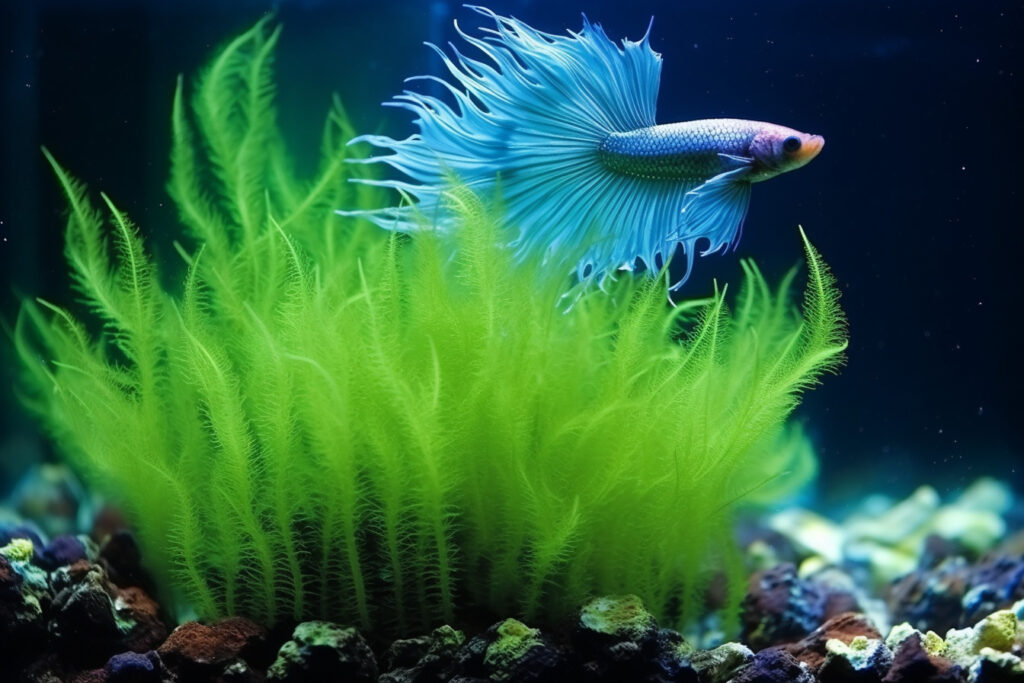
Hornwort (Coontail) For Betta Fish Tank, Is It Good?
Home Hornwort (Coontail) For Betta Fish Tank, Is It Good? Explore the benefits of hornwort
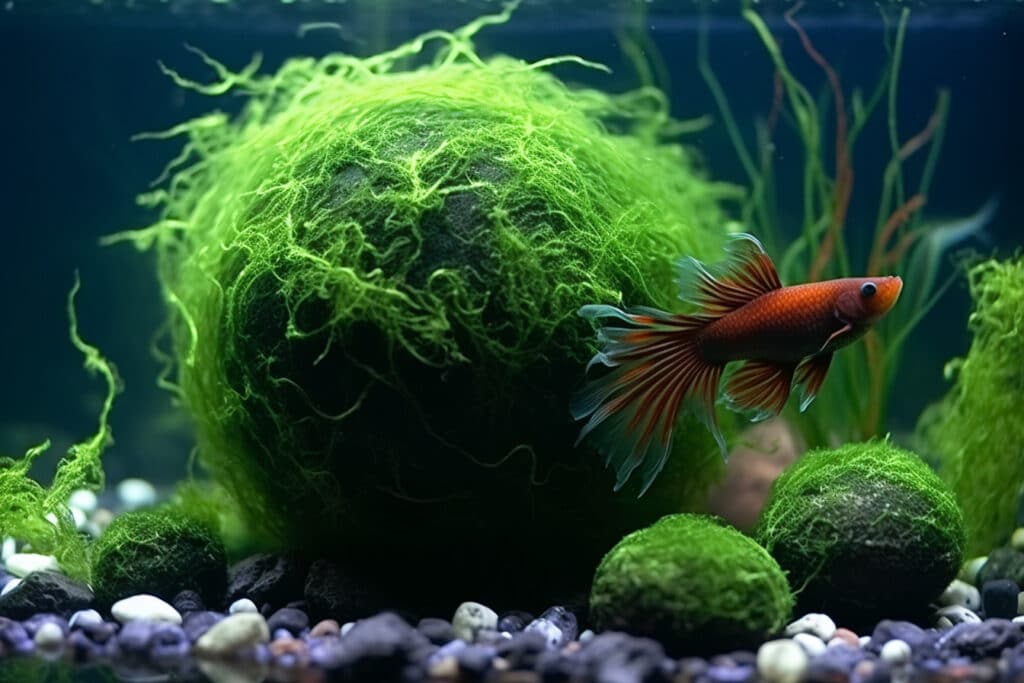
Java Moss for Betta Fish, Is It Good?
Home Java Moss for Betta Fish, Is It Good? Hello, aquatic enthusiasts! Welcome to our
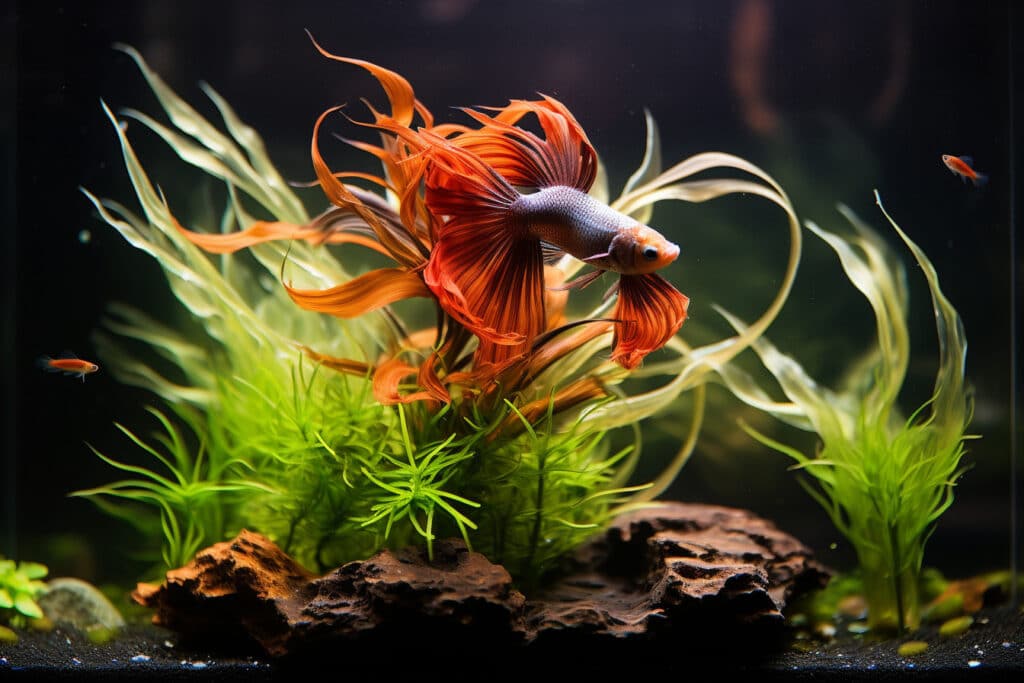
The Best Aquatic Plants For Betta Fish
Home The Best Aquatic Plants For Betta Fish Aquatic Plants for Betta Fish: Uncover the
